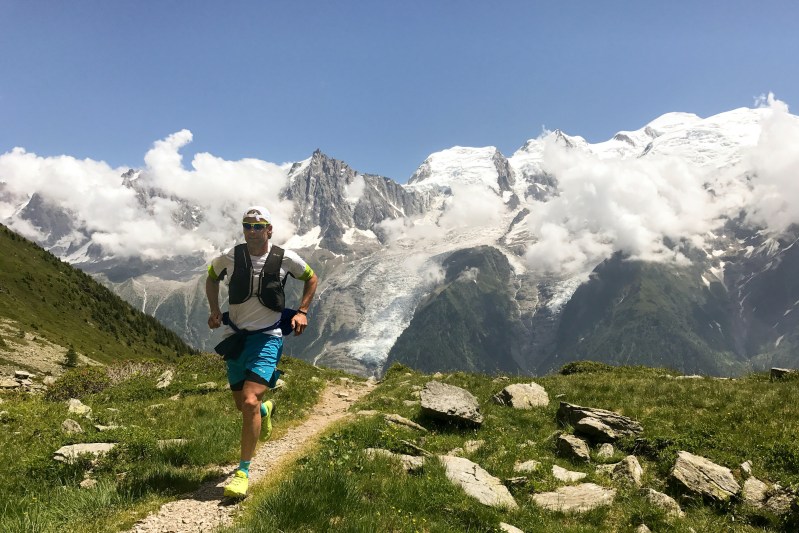
One of the best things about running as a sport is that it can be done virtually anywhere. From tracks to treadmills, neighborhood roads to sandy beaches, and city parks to mountain trails, there’s a type of terrain, setting, or style of running to suit every guy’s preferences. If you’re an outdoorsy guy, or simply want to get out and enjoy the great outdoors more, you might want to consider taking up mountain running.
Related Guides
The instability and varied terrain and topography you’ll cover when mountain or trail running provides additional physical benefits beyond those of any good training run. Not only will mountain running allow your body to reap all of the normal physical benefits of running, but you get the added perks of improving your agility, core strength, and ankle stability due to the uneven footing you’ll encounter on the trail. The inevitable inclines and declines characteristic of mountain running also require more muscular involvement, and will develop your leg strength more than standard road running, or miles covered on a track or treadmill. Perhaps most importantly, summitting a mountain gifts you beautiful views, connects you to nature, imparting a hefty dose of endorphins that will surely bring you closer to the elusive “runner’s high.”
Mountain Running Gear
Even if you’re a seasoned road runner, there are a few specialized gear items you’ll want if you’re going to branch into mountain or trail running.
Trail Shoes
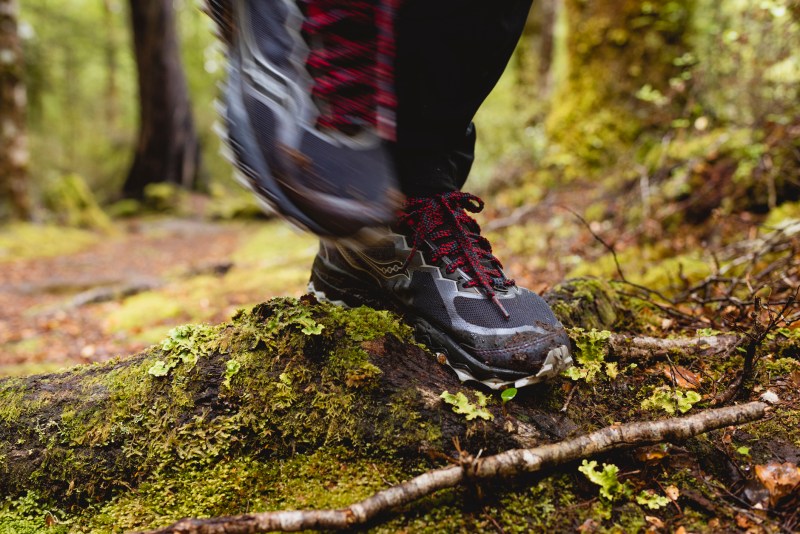
Trail running shoes are essential if you’re going to be covering any off-road miles, and unless you’re running up the mountain on a paved road — like the Mount Washington race — you’ll almost certainly encounter trails while mountain running. Trail shoes provide better traction for the varied terrain on a trail, and they often are better at shedding water, should you need to ford a small stream. If you’ve never worn trail shoes before, consider going to try them on in person rather than ordering a pair sight unseen online. The fit can be a little different, and a shoe expert at a running specialty store can make sure you get the best pair for your needs.
Read more: Best Running Gear
Hydration Pack or Vest
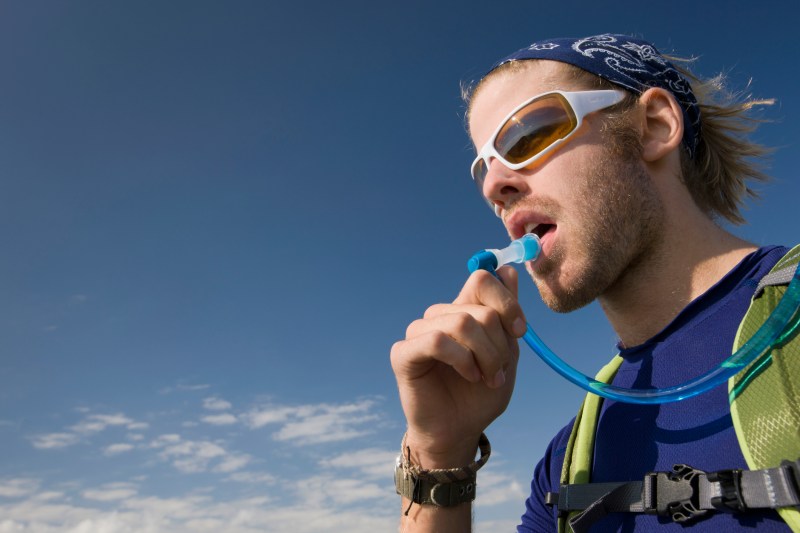
Unless you plan on doing only a very short run, you’ll need a way to take water (at the very least) with you. There are numerous ways to carry water while running, from handheld water bottles to waist belts for shorter runs to hydration vests and hydration packs with a bladder for longer excursions. Packs should also offer ample storage room for your keys, snacks, first aid equipment, maps, and other accessories you may want to take along on the run. If possible, see if you can try on the vest, pack, or belt before buying it to ensure you can get a good snug fit. Any bouncing or moving can cause chafing and throw off your balance.
Water or Sports Drink
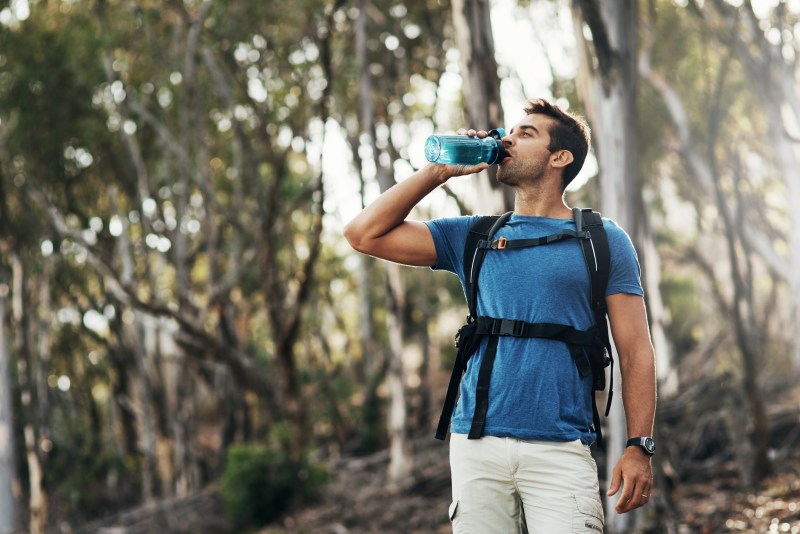
You’ll need plenty of fluids for a long run; don’t rely on accessible clean drinking water at the trail. If you’re running longer than 90 minutes, consider an electrolyte replacement or sports drink unless you plan on bringing snacks that specifically provide ample electrolytes in addition to calories. Your fluid replacement needs will depend on the climate, season, altitude, sweat rate, fitness level, and run duration.
Snacks
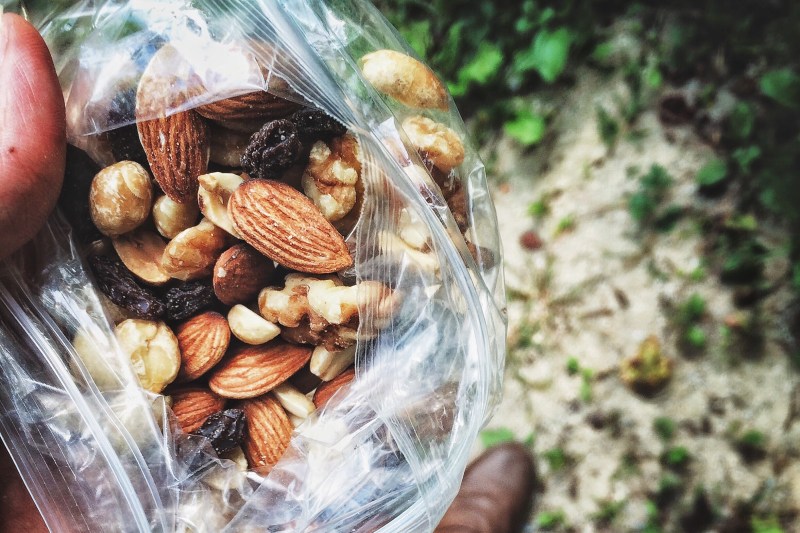
You don’t have to stick to just energy gels, chews, or bars to fuel your long runs. Particularly because mountain running often includes sections of hiking and a slower overall running pace, your stomach might be able to handle more “real” food during a mountain run compared to long road runs or marathons. Dried fruit, such as dates, apricots, and dried pineapple makes a great energy-dense natural option. Peanut butter sandwiches, trail mix, homemade granola or protein balls, whole-grain waffles with almond butter, homemade banana walnut or pumpkin chocolate chip muffins are examples of easy hiking snack options. You can stash them in your waist pack for easy access mid-run.
Appropriate Running Clothing
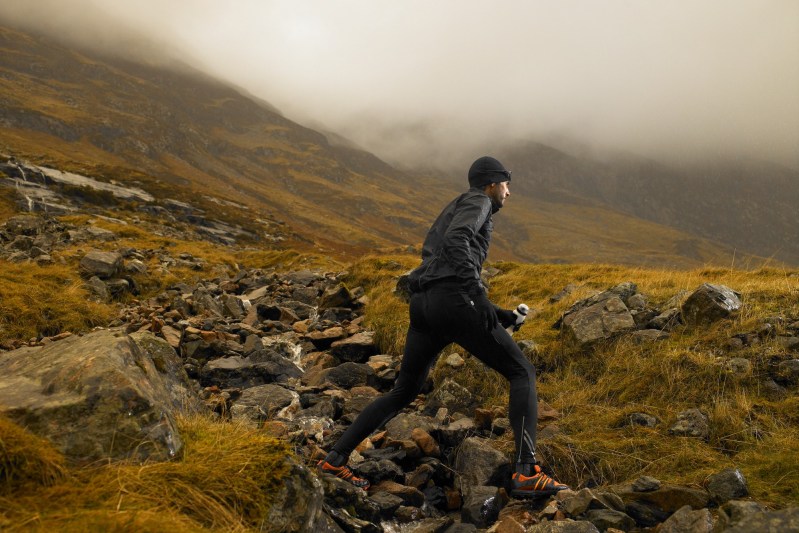
As with road running, you’ll want moisture-wicking clothing and compression socks to keep you comfortable while mountain running. You’ll likely need more layers as well if you anticipate significant changes in altitude.
Recommended
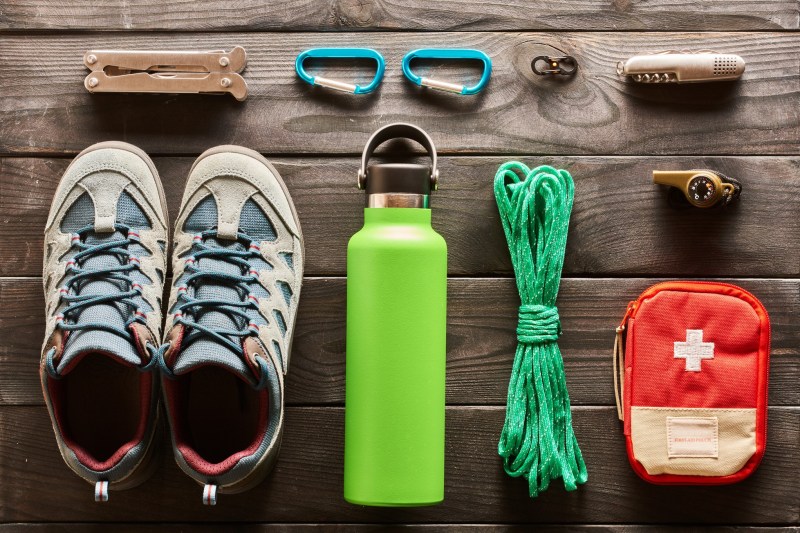
- Telescoping poles for very technical trails
- First aid kit
- Sunscreen and sun hat
- Insect repellent
- Headlamp
- Running gaiters
- Compass/topo map/route description/GPS
- Safety whistle
Preparing for a Mountain Run
Before you head out the door for a mountain run — especially if you’ll be moving for more than an hour or so, make sure you’ve taken steps to prepare your body to have a successful expedition. This includes things like fueling and hydrating properly before the workout, preparing your pack, warming up, confirming your route, charging your watch or phone, and checking the weather forecast so that you can dress appropriately for the anticipated conditions.
Your pre-run fueling strategy will depend on how long you’ll be running, the time of day, your nutrition needs, and your personal digestion tolerance. Some guys have sensitive stomachs and need to allow at least an hour or two to digest any sort of food, even a light snack of simple carbohydrates, whereas other guys may be able to run comfortably after finishing a more substantial meal. You may need to experiment with different foods and eating schedules to find what works best for you. In general, you’ll want to eat an easily digestible meal or snack that includes some protein and fat but is predominately carbohydrate-based. Examples are whole-grain toast with nut butter and sliced banana, oatmeal with flaxseeds and berries, or a low-sugar protein bar. It’s typically wise to limit the fiber intake in your pre-run food choice to prevent needing to pull over for an impromptu pit stop mid-run.
Make sure any electronics you need are charged, review your planned route, and prepare your body with any foam rolling, mobility work, or stretching you do, and then head out for your trail run.
Choosing a Route
Depending on where you live, taking on a mountain run is likely not as simple as opening your front door and running to the closest trailhead. You’ll likely need to drive somewhere to find the best mountain runs. When choosing a route, you’ll want to consider a variety of factors such as the following:
- Length
- Difficulty of the route
- Your skill level
- Time to and from the trail
- Specialized gear needed
- Safety
- Wildlife
- Accessibility
- Weather conditions
- Altitude gain
- Terrain
- Trail resources
- Trail popularly/foot traffic
- Training goals
- Runability of the route
- Ease of navigation (well marked, lots of confusing offshoots, etc.)
- Familiarity
If you have a local running shoe store or running club, you can usually get good recommendations from seasoned trail runners for the best mountain routes to take on. An outdoor gear and apparel shop like EMS or REI is another good resource, as are topographical maps, trail guides, online trail running communities, and hiking clubs.
It’s also smart to tackle the mountain run with a running buddy. It’s not only safer, but if your trail partner knows the route, you can focus more on enjoying the run instead of navigating the journey.
Mountain Running Technique
The rocks, roots, boulders, leaves, and uneven surfaces you’ll encounter when trail running requires you to use some specific running form or technique adjustments compared to running on smooth pavement or a treadmill, and these differences are magnified when you focus on just the hallmark inclines and declines in mountain running. Going uphill requires muscular power and strength (especially in the glutes, hips, hamstrings, and calves), aerobic endurance, and some anaerobic capacity. You’ll also use your arms, core, hip flexors, and back extensors. More so than “running” up the mountain, your stride and technique uphill — particularly over steep, narrow, or technical climbs — may more closely resemble power hiking. In fact, even the best professional trail runners typically power hike some uphill stretches during mountain races because it’s actually more energy- and time-efficient to switch to a walk once the grade or terrain becomes too difficult to easily run. Though many hardcore runners may scoff at the idea of walking during a “run,” if you’re a competitive guy, out there trying to cover the route as fast as you can, you’ll likely find yourself relinquishing your steadfast commitment to not walk a single step once you figure out how much more it can be. Switching to a fast hiking speed gives your heart rate a chance to slow a bit, which builds in some recovery and better situates you to attack the next tunable section at a faster pace. It also switches up the demand on specific muscles, easing the “burn,” and preventing overuse.
Conquering the uphill stretches of mountain runs takes general training to boost your fitness overall, as well as dedicated uphill training. If you’re gearing up for a trail race or plan to make mountain trails your primary running routes, you’ll want to invest training time specifically into hill workouts to develop the strength, fitness capacity, and technical ability to handle the cardiovascular and muscular demands of mountain running inclines.
When you do run uphill, shorten your stride and lean slightly into the hill from your ankles, not your hips. Try not to hunch over because doing so inhibits your ability to breathe deeply — and you’ll want your full working lung capacity on challenging mountain passes! Increase your cadence, particularly in rocky sections, so that your steps are short, quick, and light even if you slow your overall pace. Swing your arms more dramatically for added power.
On the downhills, avoid the natural tendency to lean backward, as this can increase your risk of injury. Leaning backward also places your center of mass behind your feet, which makes it harder to balance. Depending on the pace you’re running, look 20-30 feet in front of your body.
General trail running technique tips:
- Don’t overstride: In general, it’s wise to shorten your stride when running on a trail rather than predictably even pavement or a treadmill belt. This will improve your balance by keeping your feet more directly under your body.
- Don’t stare straight down at your feet: Keep your gaze on the trail about 10-15 feet in front of you so that you can scan for upcoming obstacles and anticipate your footing or necessary shifts.
- Use your arms: Your arms not only provide momentum, but they help you balance. Winging your elbows out to the side a bit, for example, augments the degree of balance support they provide, which is especially helpful when descending narrow or technical passages.
Mountain Running Tips
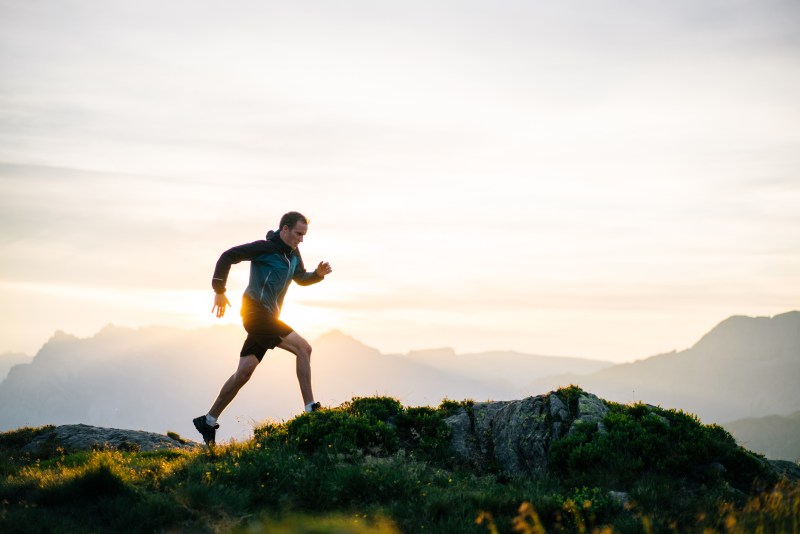
Focus on time, not mileage: When measuring your progress, it’s often more effective to focus on the “time on your feet” or “moving time” rather than miles covered. Distance covered varies significantly based on terrain, altitude, technical difficulty, weather, etc., so you can better compare your workouts on different courses by the number of minutes you were moving.
Get a Heart Rate Monitor
In that vein, using a heart rate monitor (like fitness trackers) will help you gauge your effort level over the workout when you are less able to rely on pace as an indicator of the intensity of your workout.
Use Proper Etiquette
Don’t litter, don’t hog the trail if others are passing, yield to runners coming up the trail if you are going down the trail, and be polite and friendly to other runners, walkers, and hikers you may see.
Strength Train
The variable terrain and challenging topography of mountain running make strength training and doing core work all the more important than it even is with regular running. Building your core strength will improve your balance and efficiency, and a total body routine will give your body the optimal foundation for the miles you’ll put on the trail. Focus on compound, multi-joint movements like squats, steps, deadlifts, and split squats, along with anti-rotation exercises like planks.



